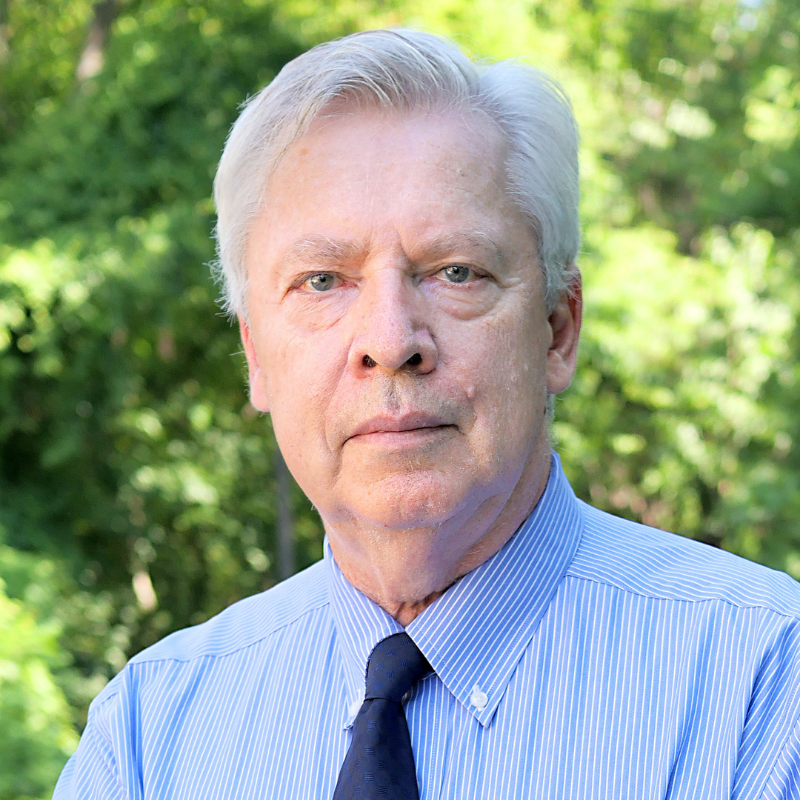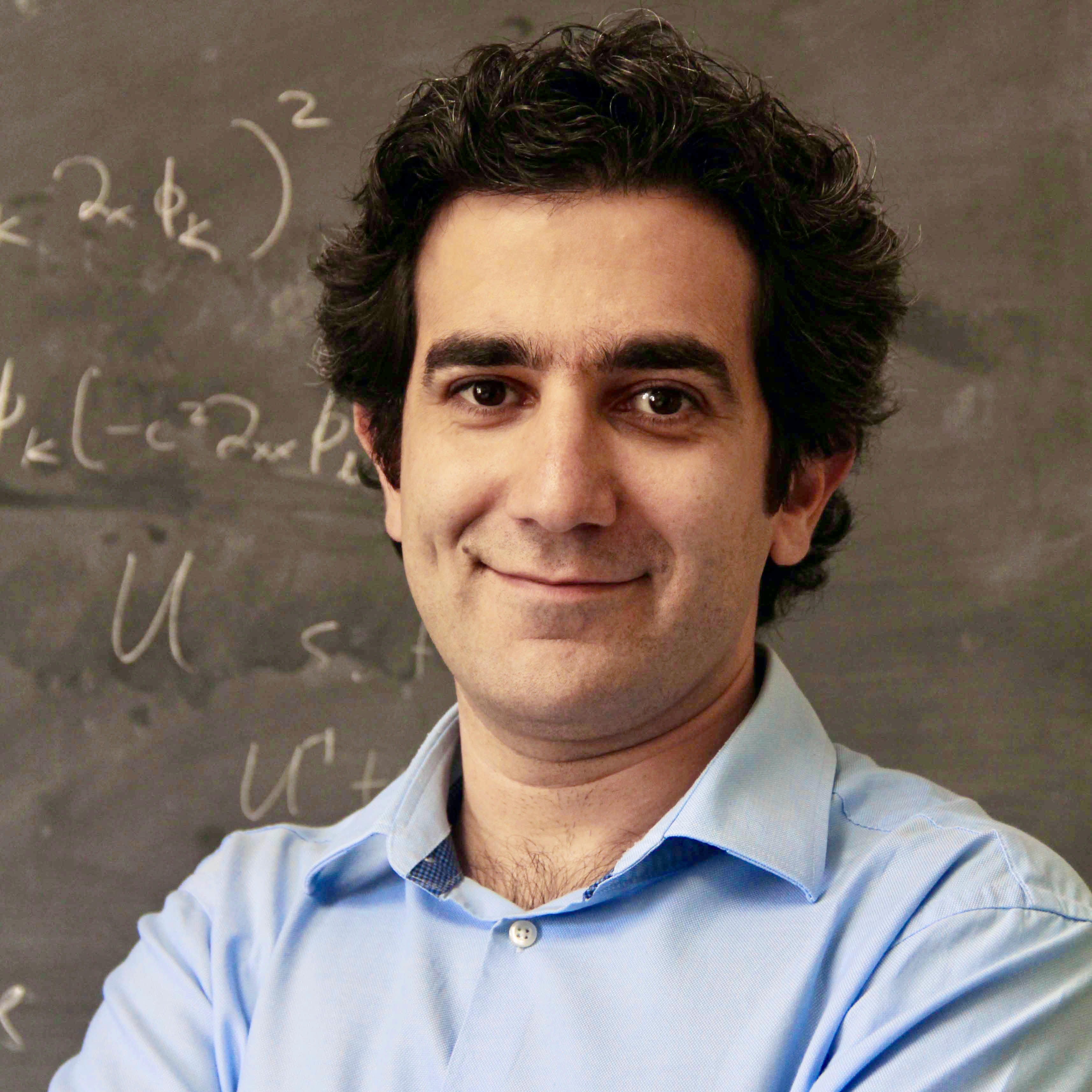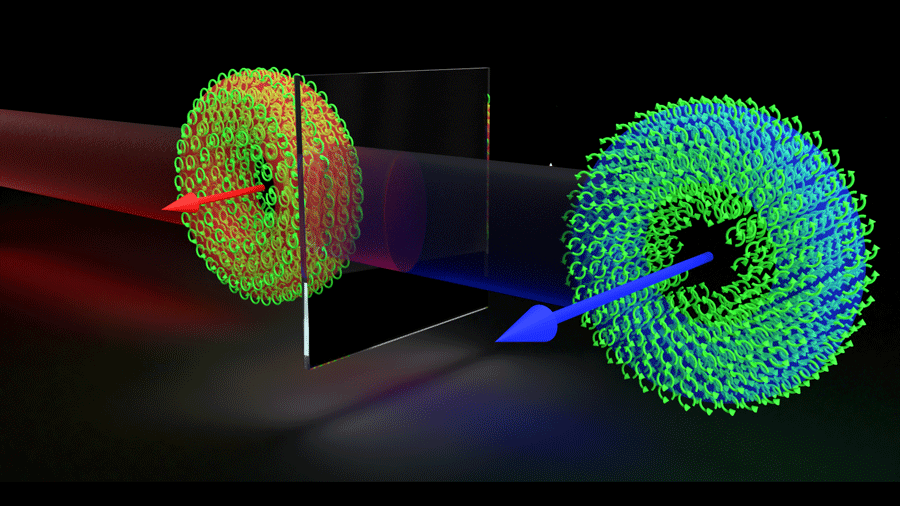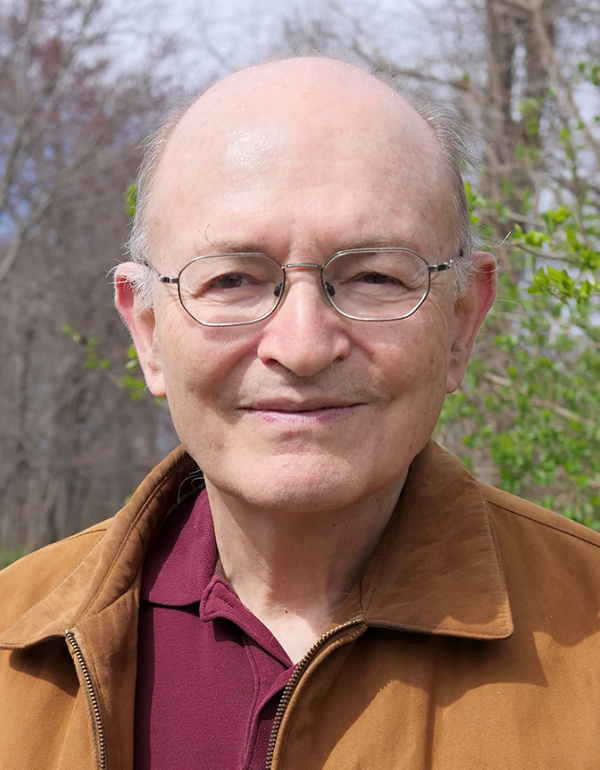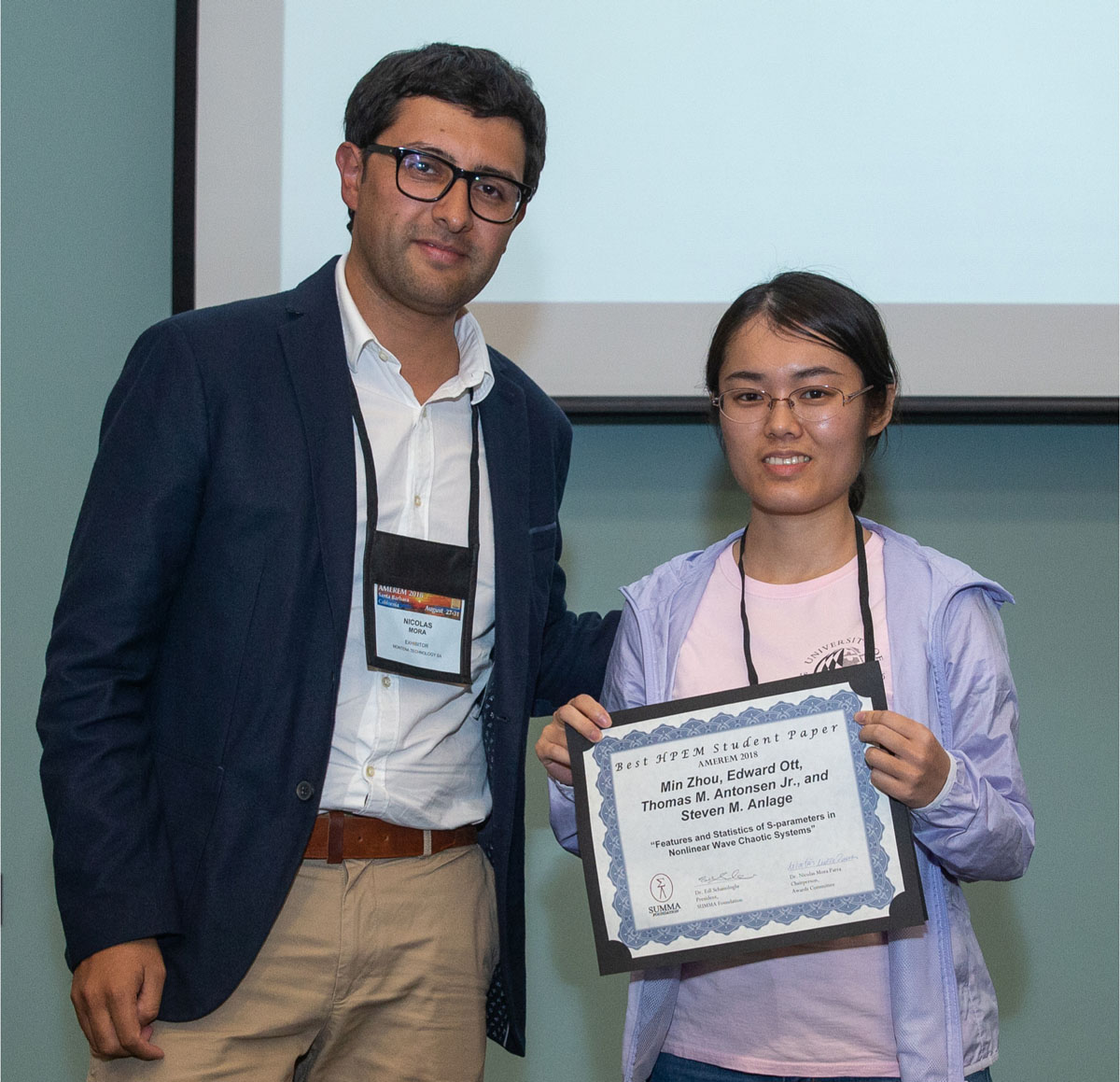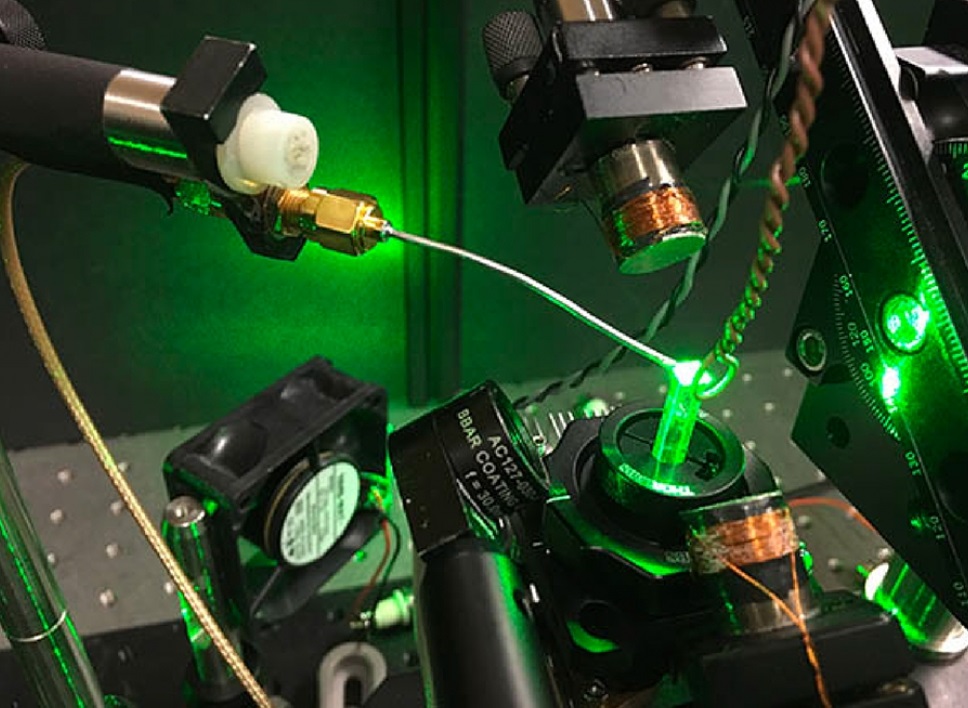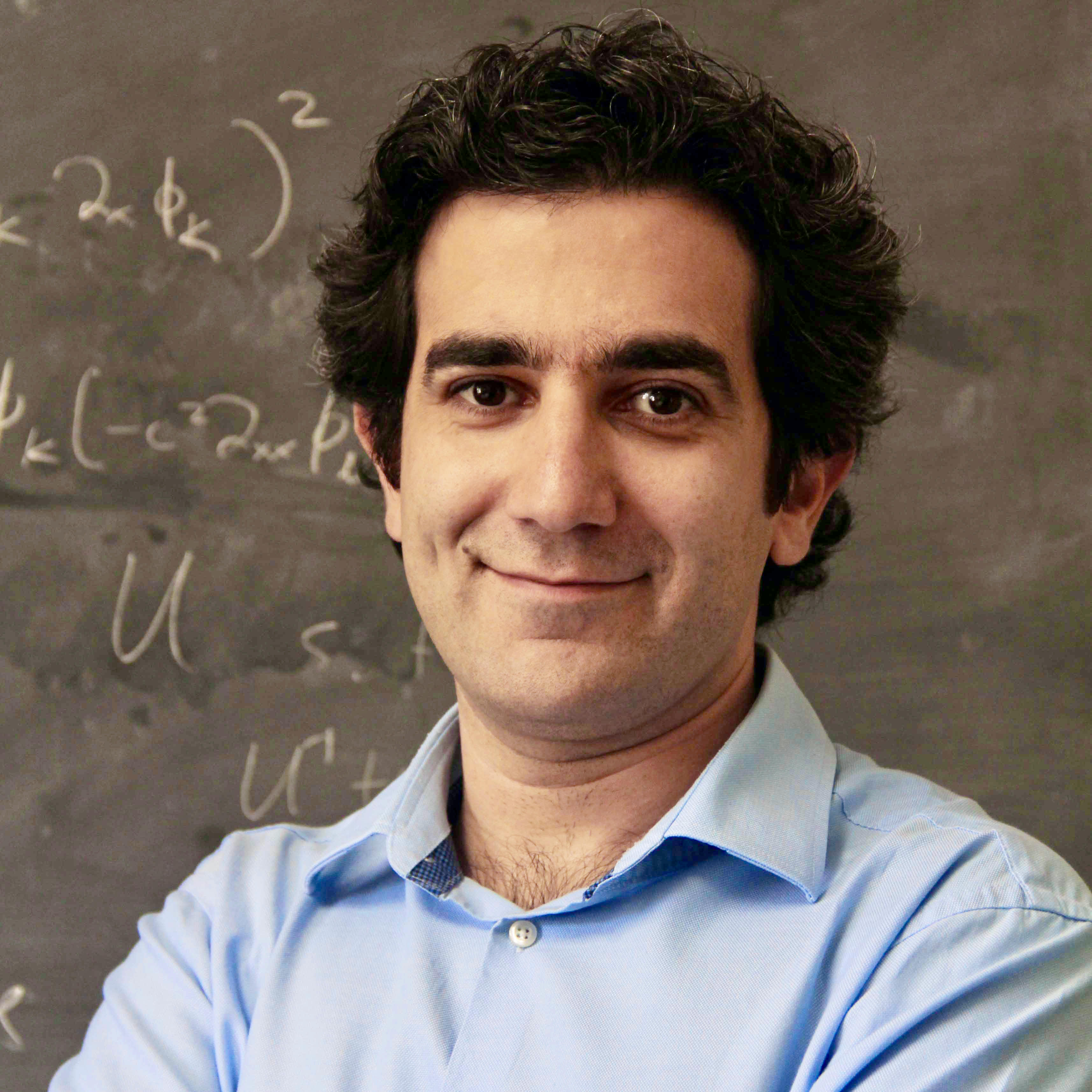News Story
UMD Researchers Create On-Demand Cold Spots to Generate Electromagnetic Cone of Silence
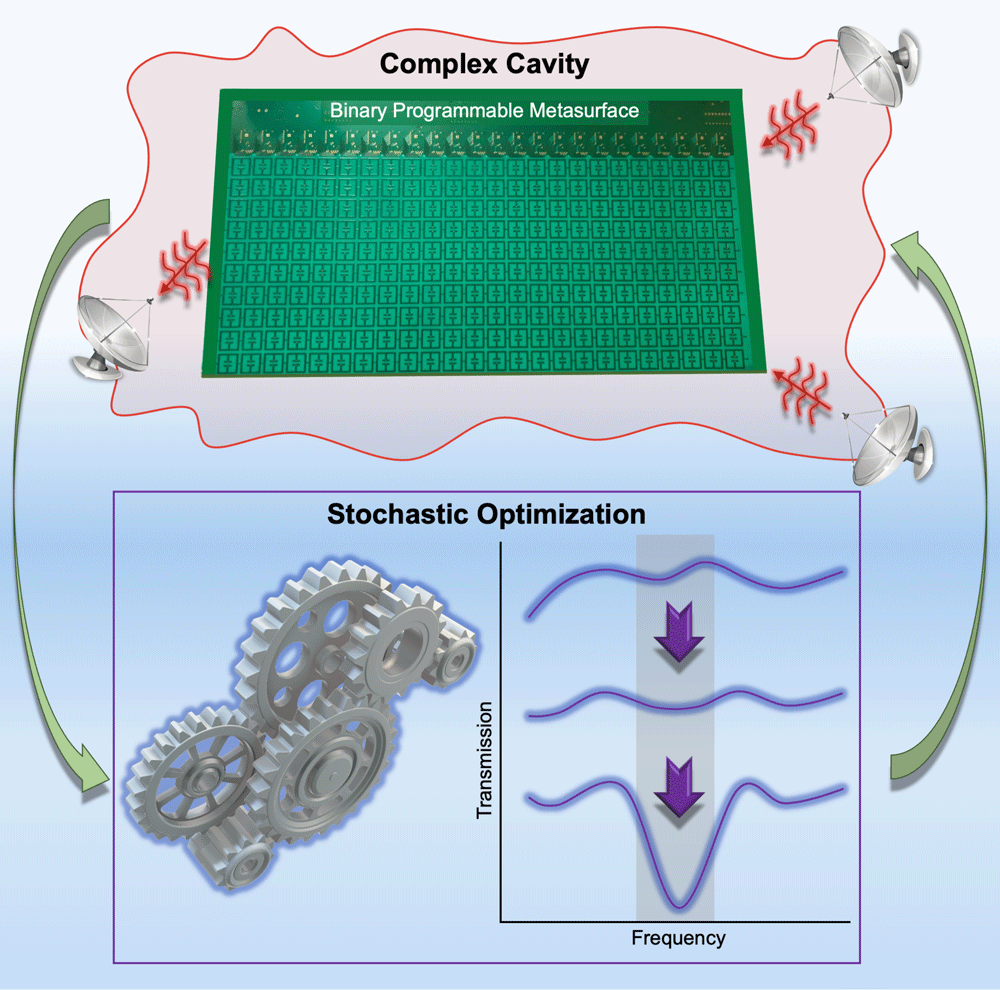
In modern society, we are accustomed to having electronic systems that always work, regardless of the conditions. Protection of sensitive electronics to interference through unwanted coupling between components or intentional electromagnetic attack is important to ensure uninterrupted service. However, the environments in which we operate are growing increasingly complex and the electromagnetic spectrum is more congested. Additionally, certain environments such as a passenger cabin on an aircraft or train, can act as reverberant cavities, resulting in random fluctuations in signal levels. These effects are dynamic, so preventing significant performance degradation necessitates an approach that is capable of adapting to changing conditions.
An electromagnetic enclosure can be characterized by its scattering parameters, which are voltage to voltage transfer functions defining the behavior of transmission and reflection between inputs and outputs. One method of dynamically changing the scattering parameters is to install a programmable metasurface inside the cavity. A programmable metasurface consists of multiple unit cells, each of which can modify its reflection coefficient, allowing the direction of reflected rays to be adjusted on-the-fly.
Researchers in the Wave Chaos Group at the University of Maryland, College Park (UMD) have used this approach to create on-demand coldspots, or nulls in transmission, effectively generating an electromagnetic cone of silence. Their work, published on December 29 in Physical Review Research, used a binary tunable metasurface manufactured by the Johns Hopkins University Applied Physics Laboratory. The relationship between commands and cavity scattering parameters is extremely complex, so simple linear techniques fail to converge. The team, led by electrical and computer engineering Ph.D. student Benjamin Frazier, developed an efficient stochastic algorithm and experimentally demonstrated the ability to generate coldspots at arbitrary frequencies, with arbitrary bandwidths, and even when driving multiple inputs.
“Chaotic microwave cavities are extremely useful as surrogates to probe the behavior of electromagnetic waves in larger complicated enclosures and are used in many of the research projects being investigated both by our group and collaborators at facilities such as the Naval Research Lab,” said Frazier. “The ability to dynamically modify the cavity in a very detailed and controllable manner is a significant advancement towards harnessing waves as they propagate through these rich scattering environments.”
In addition, they showed the ability to induce coherent perfect absorption states inside the cavity. Coherent perfect absorption is a special condition inside the cavity where all incoming energy injected into the cavity is absorbed and has great promise as a method to enable long range wireless power transfer.
Other authors of the paper include UMD Electrical and Computer Engineering (ECE) Professors Thomas M. Antonsen and Edward Ott, and ECE Affiliate and Physics Professor Steven M. Anlage.
DOI: https://doi.org/10.1103/PhysRevResearch.2.043422
Published January 25, 2021
